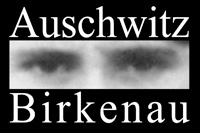




Typhus
A severe and dangerous infectious disease which led to the death of tens of thousands Auschwitz prisoners, caused by bacteria transmitted by fleas that are parasitic to rodents, including rats and mice. The first symptoms, visible several days after infection, are high fever and a rash taking the form of red spots on the skin. Next comes damage to the nervous and circulatory systems, and to the heart. Effective treatment with antibiotics was not available during World War II. Surviving the illness thus depended on the resistance of the individual organism; recovery without treatment may occur after about four weeks. At first, SS doctors did not attach much importance to combating its causes. Only the death of the SS head camp physician in May 1942 and numerous cases among the garrison forced the camp authorities to take preventive measures. These included mass selection for the gas chambers of people with symptoms of typhus, more frequent fumigation of clothing, the disinfection of barracks, and showers for prisoners. The typhus epidemic was not brought under control until 1944.
